Home » Wind Energy » Technical Potential for Wind Energy
Technical Potential for Wind Energy
The theoretical potential for wind, as estimated by the global annual flux, has been estimated at 6,000 EJ/yr. The global technical potential for wind energy, meanwhile, is not fixed, but is instead related to the status of the technology and assumptions made regarding other constraints to wind energy development. Nonetheless, a growing number of global wind resource assessments have demonstrated that the world’s technical potential for wind energy exceeds current global electricity production, and that ample technical potential exists in most regions of the world to enable significant wind energy deployment relative to current levels.
The wind resource is not evenly distributed across the globe, however, and a variety of other regional factors are likely to restrict growth well before any absolute global technical resource limits are encountered. As a result, wind energy will not contribute equally in meeting the needs of every country.
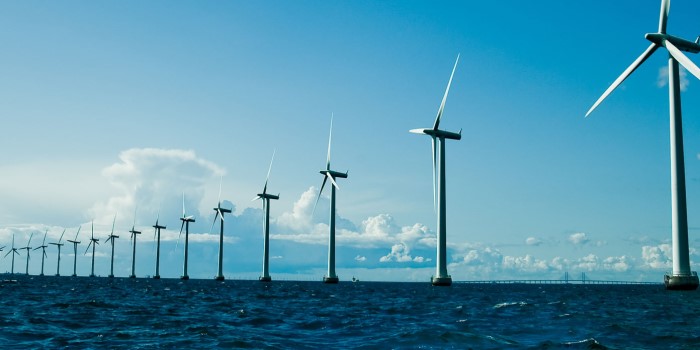
Global technical potential
A number of studies have evaluated the global technical potential for wind energy. In general, two methods can be used: first, available wind speed measurements can be interpolated to construct a surface wind distribution; and second, physics-based numerical weather prediction models can be applied. Studies of the global wind energy resource have used varying combinations of these two approaches. Additionally, it is important to recognize that estimates of the technical potential for wind energy should not be viewed as fixed—the potential will change as wind energy technology develops (e.g., taller towers provide access to better wind, or foundation innovation allows offshore plants to be developed in greater water depths) and as more is learned about technical, environmental and social concerns that may influence development (e.g., land competition, distance from resource areas to electricity demand centers, etc.).
Synthesizing the available literature, the IPCC’s Fourth Assessment Report identified 600 EJ/yr of onshore wind energy technical potential. Using the direct equivalent method of deriving primary energy equivalence, the IPCC estimate of onshore wind energy technical potential is 180 EJ/yr (50,000 TWh/yr), more than two times greater than gross global electricity production in 2008 (73 EJ, or 20,200 TWh). Of this 180 EJ/y, only 0.8 EJ (220 TWh, 0.4% of the estimated technical potential) was being used for wind energy supply.
More generally, a number of analyses have been undertaken to estimate the global technical potential for wind energy. The methods and results of these global assessments—some of which include offshore wind energy and some of which are restricted to onshore wind energy—are summarized in Table 1.
No standardized approach has been developed to estimate the global technical potential of wind energy: the diversity in data, methods, assumptions and even definitions for technical potential complicate comparisons. Consequently, the studies show a wide range of results. Specifically, estimates of global technical potential range from a low of 70 EJ/yr (19,400 TWh/yr) (onshore only) to a high of 450 EJ/yr (125,000 TWh/yr) (onshore and near-shore) among those studies that consider relatively more development constraints (identified as ‘more constraints’ in the table). This range equals from roughly one to six times global electricity production in 2008. If those studies that apply more limited development constraints are also included, the absolute range of technical potential is greater still, from 70 EJ/yr to 3,050 EJ/yr (19,400 to 840,000 TWh/yr). Results vary based in part on whether offshore wind energy is included (and under what assumptions), the wind speed data that are used, the areas assumed available for wind energy development, the rated output of wind turbines installed per unit of land area, and the assumed performance of wind power plants. The latter is, in part, related to hub height and turbine technology. These factors depend on technical assumptions as well as subjective judgements of development constraints, thus there is no single ‘correct’ estimate of technical potential.
Though research has generally found the technical potential for offshore wind energy to be smaller than for onshore wind energy, the technical potential is nonetheless sizable. Three of the studies included in Table 1 exclude the technical potential of offshore wind energy; even those studies that include offshore wind energy often do so only considering the wind energy technology likely to be deployed in the near to medium term in relatively shallower water and nearer to shore. In practice, the size of the offshore wind energy resource is, at least theoretically, enormous, and constraints are primarily economic rather than technical. In particular, water depth, accessibility and grid connection may limit development to relatively near-shore locations in the medium term, though technology improvements are expected, over time, to enable deeper water and more remote installations. Even when only considering relatively shallower and near-shore applications, however, study results span a range from 15 to 130 EJ/yr (4,000 to 37,000 TWh/yr), while far greater technical potential is found when considering deeper water applications that might rely on floating wind turbine designs.
There are two main reasons to believe that some these studies of on and offshore wind energy may understate the global technical potential.
First, several of the studies are dated, and considerable advances have occurred in both wind energy technology (e.g., hub height) and resource assessment methods. Partly as a result, the more recent studies listed in Table 1 often calculate larger technical potentials than the earlier studies.
Second, even some of the more recent studies may understate the global technical potential for wind energy due to methodological limitations. The global assessments often use relatively simple analytical techniques with coarse spatial resolutions, rely on interpolations of wind speed data from a limited number (and quality) of surface stations, and apply limited validation from wind speed measurements in prime wind resource areas. Enabled in part by an increase in computing power, more sophisticated and finer geographic resolution atmospheric modelling approaches are beginning to be applied (and increasingly validated with higher-quality measurement data) on a country or regional basis, as described in more depth. Experience shows that these techniques have often identified greater technical potential for wind energy than have earlier global assessments.
There are, however, at least two other issues that may suggest that the estimates of global technical potential have been overstated:
Despite the limitations of the available literature, based on the above review, it can be concluded that the IPCC estimate of 180 EJ/yr (50,000 TWh/yr) likely understates the technical potential for wind energy. Moreover, regardless of the exact size of the technical potential, it is evident that the global wind resource is unlikely to be a limiting factor on global on- or offshore wind energy deployment. Instead, economic constraints associated with the cost of wind energy, institutional constraints and costs associated with transmission access and operational integration, and issues associated with social acceptance and environmental impacts are likely to restrict growth well before any absolute limit to the global technical potential for wind energy is encountered.
Regional technical potential
The global assessments reach varying conclusions about the relative technical potential for onshore wind energy among different regions, with Table 2 summarizing results from a subset of these assessments. Differences in the regional results from these studies are due to differences in wind speed data and key input parameters, including the minimum wind speed assumed to be exploitable, land use constraints, density of wind energy development, and assumed wind power plant performance; differing regional categories also complicate comparisons.
Nonetheless, the technical potentials in OECD North America and Eastern Europe/Eurasia are found to be particularly sizable, whereas some areas of non-OECD Asia and OECD Europe appear to have more limited onshore technical potential. Visual inspection of Figure 1, a global wind resource map with a 5- by 5-km resolution, also demonstrates limited technical potential in certain areas of Latin America and Africa, though other portions of those continents have significant technical potential. Caution is required in interpreting these results, however, as other studies find significantly different regional allocations of global technical potential, and more detailed country and regional assessments have reached differing conclusions about, for example, the wind energy resource in East Asia and other regions.
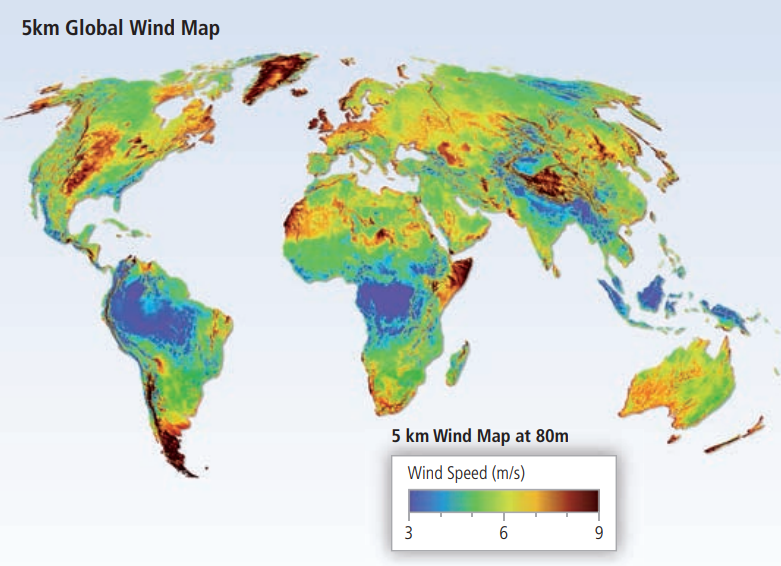 Figure 1
Figure 1
Hoogwijk et al. also compare onshore technical potential against regional electricity consumption in 1996. In most of the 17 regions evaluated, technical onshore wind energy potential exceeded electricity consumption in 1996. The multiple was over five in 10 regions: East Africa, Oceania, Canada, North Africa, South America, Former Soviet Union (FSU), Central America, West Africa, the USA and the Middle East. Areas in which onshore wind energy technical potential was estimated to be less than a two-fold multiple of 1996 electricity consumption were South Asia (1.9), Western Europe (1.6), East Asia (1.1), South Africa (1), Eastern Europe (1), South East Asia (0.1) and Japan (0.1), though again, caution is warranted in interpreting these results.
The estimates reported in Table 2 exclude offshore wind energy technical potential. Ignoring deeper water applications, Krewitt et al. estimate that of the 57 EJ/yr (16,000 TWh/yr) of technical offshore resource potential by 2050, the largest opportunities exist in OECD Europe (22% of global potential), the rest of Asia (21%), Latin America (18%) and the transition economies (16%), with lower but still significant technical potential in North America (12%), OECD Pacific (6%) and Africa and the Middle East (4%).
Overall, these studies find that ample technical potential exists in most regions of the world to enable significant wind energy deployment relative to current levels. The wind resource is not evenly distributed across the globe, however, and a variety of other regional factors (e.g., distance of resource from population centers, grid integration, social acceptance) are likely to restrict growth well before any absolute limit to the technical potential of wind energy is encountered. As a result, wind energy will not contribute equally in meeting the energy needs and GHG reduction demands of every region or country.
The wind resource is not evenly distributed across the globe, however, and a variety of other regional factors are likely to restrict growth well before any absolute global technical resource limits are encountered. As a result, wind energy will not contribute equally in meeting the needs of every country.

Global technical potential
A number of studies have evaluated the global technical potential for wind energy. In general, two methods can be used: first, available wind speed measurements can be interpolated to construct a surface wind distribution; and second, physics-based numerical weather prediction models can be applied. Studies of the global wind energy resource have used varying combinations of these two approaches. Additionally, it is important to recognize that estimates of the technical potential for wind energy should not be viewed as fixed—the potential will change as wind energy technology develops (e.g., taller towers provide access to better wind, or foundation innovation allows offshore plants to be developed in greater water depths) and as more is learned about technical, environmental and social concerns that may influence development (e.g., land competition, distance from resource areas to electricity demand centers, etc.).
Synthesizing the available literature, the IPCC’s Fourth Assessment Report identified 600 EJ/yr of onshore wind energy technical potential. Using the direct equivalent method of deriving primary energy equivalence, the IPCC estimate of onshore wind energy technical potential is 180 EJ/yr (50,000 TWh/yr), more than two times greater than gross global electricity production in 2008 (73 EJ, or 20,200 TWh). Of this 180 EJ/y, only 0.8 EJ (220 TWh, 0.4% of the estimated technical potential) was being used for wind energy supply.
More generally, a number of analyses have been undertaken to estimate the global technical potential for wind energy. The methods and results of these global assessments—some of which include offshore wind energy and some of which are restricted to onshore wind energy—are summarized in Table 1.
|
Study |
Scope |
Methods and Assumptions |
Results |
|
Krewitt et al. (2009) |
Onshore and offshore |
Updated Hoogwijk and Graus (2008), itself based on Hoogwijk et al. (2004), by revising offshore
wind power plant spacing by 2050 to 16 MW/km2 |
Technical
(more constraints): 121,000 TWh/yr 440 EJ/yr |
|
Lu et al. (2009) |
Onshore and offshore |
>20% capacity factor (Class 1); 100 m hub height; 9 MW/km2 spacing; based on coarse simulated model data set; exclusions for urban and developed areas, forests, inland water, permanent
snow/ice; offshore assumes 100 m hub height, 6 MW/km2 , <92.6 km from shore, <200m depth,
no other exclusions |
Technical
(limited constraints): 840,000 TWh/yr 3,050 EJ/yr |
|
Hoogwijk and Graus (2008) |
Onshore and offshore |
Updated Hoogwijk et al. (2004) by incorporating offshore wind energy, assuming 100 m hub
height for onshore, and altering cost assumptions; for offshore, study updates and adds to earlier
analysis by Fellows (2000); other assumptions as listed below under Hoogwijk et al. (2004); constrained technical potential defi ned here in economic terms separately for onshore and offshore |
Technical/Economic
(more constraints): 110,000 TWh/yr 400 EJ/yr |
|
Archer and Jacobson (2005) |
Onshore and near-Shore |
>Class 3; 80 m hub height; 9 MW/km2 spacing; 48% average capacity factor; based on wind
speeds from surface stations and balloon-launch monitoring stations; near-shore wind energy
effectively included because resource data includes buoys (see study for details); constrained
technical potential = 20% of total technical potential |
Technical
(limited constraints): 627,000 TWh/yr 2,260 EJ/yr Technical (more constraints): 125,000 TWh/yr 450 EJ/yr |
|
WBGU (2004) |
Onshore and offshore |
Multi-MW turbines; based on interpolation of wind speeds from meteorological towers; exclusions for urban areas, forest areas, wetlands, nature reserves, glaciers, and sand dunes; local
exclusions accounted for through corrections related to population density; offshore to 40 m
depth, with sea ice and minimum distance to shore considered regionally; constrained technical
potential (authors defi ne as ‘sustainable’ potential) = 14% of total technical potential |
Technical
(limited constraints): 278,000 TWh/yr 1,000 EJ/yr Technical (more constraints): 39,000 TWh/yr 140 EJ/yr |
Table 1
No standardized approach has been developed to estimate the global technical potential of wind energy: the diversity in data, methods, assumptions and even definitions for technical potential complicate comparisons. Consequently, the studies show a wide range of results. Specifically, estimates of global technical potential range from a low of 70 EJ/yr (19,400 TWh/yr) (onshore only) to a high of 450 EJ/yr (125,000 TWh/yr) (onshore and near-shore) among those studies that consider relatively more development constraints (identified as ‘more constraints’ in the table). This range equals from roughly one to six times global electricity production in 2008. If those studies that apply more limited development constraints are also included, the absolute range of technical potential is greater still, from 70 EJ/yr to 3,050 EJ/yr (19,400 to 840,000 TWh/yr). Results vary based in part on whether offshore wind energy is included (and under what assumptions), the wind speed data that are used, the areas assumed available for wind energy development, the rated output of wind turbines installed per unit of land area, and the assumed performance of wind power plants. The latter is, in part, related to hub height and turbine technology. These factors depend on technical assumptions as well as subjective judgements of development constraints, thus there is no single ‘correct’ estimate of technical potential.
Though research has generally found the technical potential for offshore wind energy to be smaller than for onshore wind energy, the technical potential is nonetheless sizable. Three of the studies included in Table 1 exclude the technical potential of offshore wind energy; even those studies that include offshore wind energy often do so only considering the wind energy technology likely to be deployed in the near to medium term in relatively shallower water and nearer to shore. In practice, the size of the offshore wind energy resource is, at least theoretically, enormous, and constraints are primarily economic rather than technical. In particular, water depth, accessibility and grid connection may limit development to relatively near-shore locations in the medium term, though technology improvements are expected, over time, to enable deeper water and more remote installations. Even when only considering relatively shallower and near-shore applications, however, study results span a range from 15 to 130 EJ/yr (4,000 to 37,000 TWh/yr), while far greater technical potential is found when considering deeper water applications that might rely on floating wind turbine designs.
There are two main reasons to believe that some these studies of on and offshore wind energy may understate the global technical potential.
First, several of the studies are dated, and considerable advances have occurred in both wind energy technology (e.g., hub height) and resource assessment methods. Partly as a result, the more recent studies listed in Table 1 often calculate larger technical potentials than the earlier studies.
Second, even some of the more recent studies may understate the global technical potential for wind energy due to methodological limitations. The global assessments often use relatively simple analytical techniques with coarse spatial resolutions, rely on interpolations of wind speed data from a limited number (and quality) of surface stations, and apply limited validation from wind speed measurements in prime wind resource areas. Enabled in part by an increase in computing power, more sophisticated and finer geographic resolution atmospheric modelling approaches are beginning to be applied (and increasingly validated with higher-quality measurement data) on a country or regional basis, as described in more depth. Experience shows that these techniques have often identified greater technical potential for wind energy than have earlier global assessments.
There are, however, at least two other issues that may suggest that the estimates of global technical potential have been overstated:
- Global assessments may overstate the accessibility of the wind resource in remote areas that are far from population centers.
- The assessments generally use point-source estimates of the wind resource, and assess the global technical potential for wind energy by summing local wind technical potentials.
Despite the limitations of the available literature, based on the above review, it can be concluded that the IPCC estimate of 180 EJ/yr (50,000 TWh/yr) likely understates the technical potential for wind energy. Moreover, regardless of the exact size of the technical potential, it is evident that the global wind resource is unlikely to be a limiting factor on global on- or offshore wind energy deployment. Instead, economic constraints associated with the cost of wind energy, institutional constraints and costs associated with transmission access and operational integration, and issues associated with social acceptance and environmental impacts are likely to restrict growth well before any absolute limit to the global technical potential for wind energy is encountered.
Regional technical potential
The global assessments reach varying conclusions about the relative technical potential for onshore wind energy among different regions, with Table 2 summarizing results from a subset of these assessments. Differences in the regional results from these studies are due to differences in wind speed data and key input parameters, including the minimum wind speed assumed to be exploitable, land use constraints, density of wind energy development, and assumed wind power plant performance; differing regional categories also complicate comparisons.
|
Grubb and Meyer (1993) |
WEC (1994) |
Krewitt et al. (2009) |
Lu et al. (2009) |
||||
| Region | % | Region | % |
Region |
% |
Region |
% |
| Western Europe | 9 | Western Europe | 7 | OECD Europe | 5 | OECD Europe | 4 |
| North America | 26 |
North America |
26 |
OECD North America |
42 |
North America |
22 |
| Lation America | 10 |
Lation America and Caribbean |
11 |
Lation America |
10 |
Lation America |
9 |
| Eastern Europe and Former Soviet Union | 20 |
Eastern Europe and CIS |
22 | Transition Economies | 17 | Non-OECD Europe and Former Soviet Union | 26 |
| Africa | 20 | Sub-Saharan Africa | 7 | Africa and Middle East | 9 |
Africa and Middle East |
17 |
| Australia | 6 | Middle East and North Africa | 8 | OECD Pacific | 14 | Oceania | 13 |
| Rest of Asia | 9 |
Rest of Asia |
4 |
Rest of Asia |
4 |
Rest of Asia |
9 |
Table 2
Nonetheless, the technical potentials in OECD North America and Eastern Europe/Eurasia are found to be particularly sizable, whereas some areas of non-OECD Asia and OECD Europe appear to have more limited onshore technical potential. Visual inspection of Figure 1, a global wind resource map with a 5- by 5-km resolution, also demonstrates limited technical potential in certain areas of Latin America and Africa, though other portions of those continents have significant technical potential. Caution is required in interpreting these results, however, as other studies find significantly different regional allocations of global technical potential, and more detailed country and regional assessments have reached differing conclusions about, for example, the wind energy resource in East Asia and other regions.
 Figure 1
Figure 1
Hoogwijk et al. also compare onshore technical potential against regional electricity consumption in 1996. In most of the 17 regions evaluated, technical onshore wind energy potential exceeded electricity consumption in 1996. The multiple was over five in 10 regions: East Africa, Oceania, Canada, North Africa, South America, Former Soviet Union (FSU), Central America, West Africa, the USA and the Middle East. Areas in which onshore wind energy technical potential was estimated to be less than a two-fold multiple of 1996 electricity consumption were South Asia (1.9), Western Europe (1.6), East Asia (1.1), South Africa (1), Eastern Europe (1), South East Asia (0.1) and Japan (0.1), though again, caution is warranted in interpreting these results.
The estimates reported in Table 2 exclude offshore wind energy technical potential. Ignoring deeper water applications, Krewitt et al. estimate that of the 57 EJ/yr (16,000 TWh/yr) of technical offshore resource potential by 2050, the largest opportunities exist in OECD Europe (22% of global potential), the rest of Asia (21%), Latin America (18%) and the transition economies (16%), with lower but still significant technical potential in North America (12%), OECD Pacific (6%) and Africa and the Middle East (4%).
Overall, these studies find that ample technical potential exists in most regions of the world to enable significant wind energy deployment relative to current levels. The wind resource is not evenly distributed across the globe, however, and a variety of other regional factors (e.g., distance of resource from population centers, grid integration, social acceptance) are likely to restrict growth well before any absolute limit to the technical potential of wind energy is encountered. As a result, wind energy will not contribute equally in meeting the energy needs and GHG reduction demands of every region or country.
Post a Comment:
You may also like:

Featured Articles
What Are the Advantages of Wind Energy?
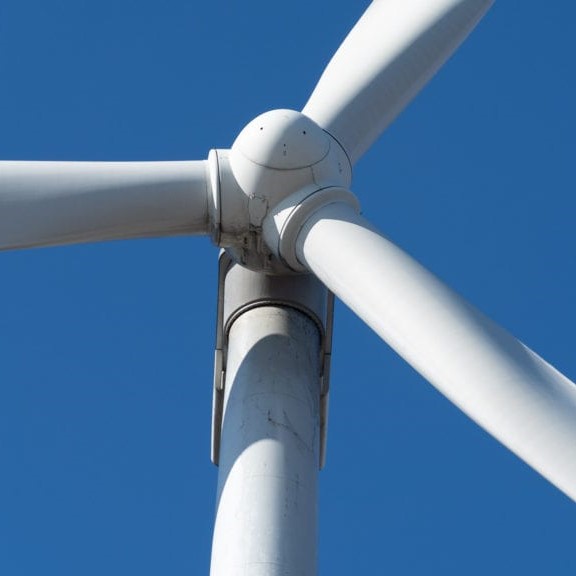 Wind power is the fastest-growing source of electricity worldwide. The American Wind Energy Association estimates that more ...
Wind power is the fastest-growing source of electricity worldwide. The American Wind Energy Association estimates that more ...
 Wind power is the fastest-growing source of electricity worldwide. The American Wind Energy Association estimates that more ...
Wind power is the fastest-growing source of electricity worldwide. The American Wind Energy Association estimates that more ...What is the Wind Energy Conversion ...
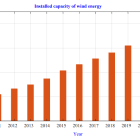 Due to technical and economic visibility, wind power has emerged as one of the most promising renewable energy sources ...
Due to technical and economic visibility, wind power has emerged as one of the most promising renewable energy sources ...
 Due to technical and economic visibility, wind power has emerged as one of the most promising renewable energy sources ...
Due to technical and economic visibility, wind power has emerged as one of the most promising renewable energy sources ...How Wind Energy is Collected and ...
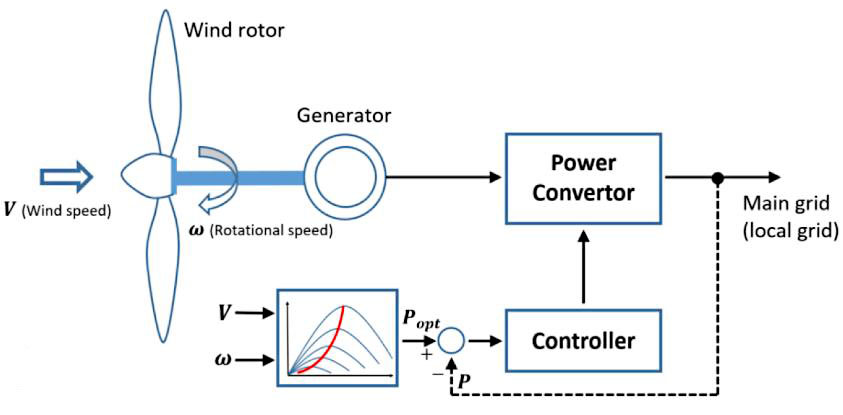 Wind energy is a form of solar energy. Earth’s atmosphere is unevenly heated by solar radiation and the air is in constant motion ...
Wind energy is a form of solar energy. Earth’s atmosphere is unevenly heated by solar radiation and the air is in constant motion ...
 Wind energy is a form of solar energy. Earth’s atmosphere is unevenly heated by solar radiation and the air is in constant motion ...
Wind energy is a form of solar energy. Earth’s atmosphere is unevenly heated by solar radiation and the air is in constant motion ...Wind Energy Background
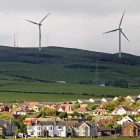 The kinetic energy in the wind is a promising source of renewable energy with significant potential in many parts of the world. ...
The kinetic energy in the wind is a promising source of renewable energy with significant potential in many parts of the world. ...
 The kinetic energy in the wind is a promising source of renewable energy with significant potential in many parts of the world. ...
The kinetic energy in the wind is a promising source of renewable energy with significant potential in many parts of the world. ...Technical Potential for Wind Energy
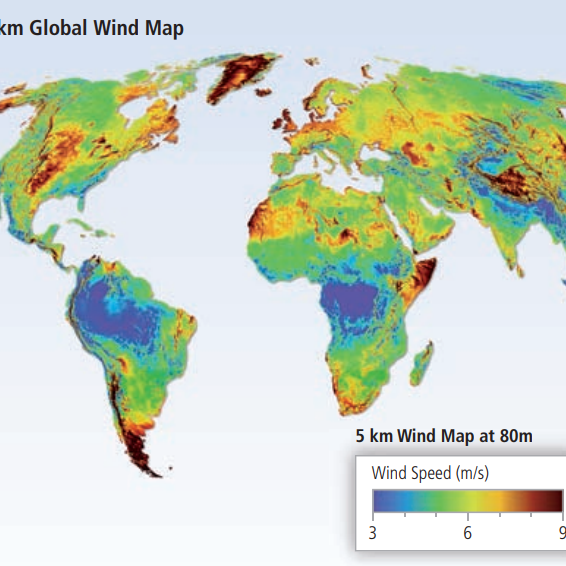 The theoretical potential for wind, as estimated by the global annual flux, has been estimated at 6,000 EJ/yr. The global ...
The theoretical potential for wind, as estimated by the global annual flux, has been estimated at 6,000 EJ/yr. The global ...
 The theoretical potential for wind, as estimated by the global annual flux, has been estimated at 6,000 EJ/yr. The global ...
The theoretical potential for wind, as estimated by the global annual flux, has been estimated at 6,000 EJ/yr. The global ...